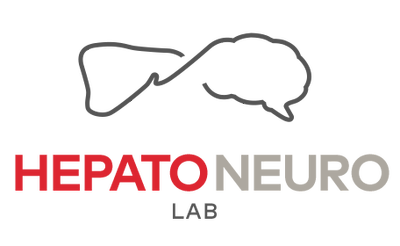BACKGROUND: Hepatic encephalopathy (HE) is a neuropsychiatric syndrome, a major complication of chronic liver disease (CLD/cirrhosis). With an increasing prevalence of obesity-induced cirrhosis and evidence linking blood-derived lipids to neurological impairment, we hypothesize that obesity increases the risk, severity and progression of HE.
AIM: To develop and characterize an animal model of cirrhosis and obesity to investigate the synergistic effect of obesity and CLD on the development of neurological impairment and HE.
M&M: Animal model of CLD and HE: The 6-week bile-duct ligation (BDL) rats, as well as sham-operated controls, were used. Obesity: To induce obesity, high-fat diet (HFD) was given for 3 weeks before BDL. Experimental groups: 1. Obese-BDL rats received HFD for 3 weeks pre-BDL and normal diet (ND) for 6 weeks post-BDL; 2. Lean-BDL rats received ND pre- and post-BDL; 3. Lean-Sham rats received ND pre- and post-sham surgery. Behaviour: Motor coordination, muscular strength, and recognition memory were assessed before surgery, as well as 3 and 6 weeks post-BDL or sham surgery using the RotaRod, grip-strength and object recognition tests, respectively. Body-composition (echoMRI): Fat vs lean mass, as well as free water (ascites, fluid retention), were also monitored.
RESULTS: Before the surgery, body weight and fat mass of rats on HFD (Obese-BDL) were increased in comparison to rats on ND (Lean-BDL and Lean-Sham). Three weeks after surgery, body-weight, fat mass, lean mass and free water were increased in Obese-BDL rats vs Lean-BDL rats. Long-term memory was reduced in Obese-BDL, but not in Lean-BDL, vs Lean-Sham rats. Six weeks after surgery, similar to Lean-BDL rats, Obese-BDL rats lost body weight, fat and lean mass, and increased free water vs Lean-Sham rats. Motor coordination, forelimb strength and long-term memory were impaired in Obese-BDL rats in comparison to Lean-BDL or Lean-Sham rats, whereas hind-limb strength and short-term memory were impaired in both Obese- and Lean-BDL rats when compared to Lean-Sham rats.
SUMMARY: HFD induces obesity features in healthy non-cirrhotic rats, and such effects are maintained in cirrhotic-BDL rats. Obesity also exacerbates and accelerates the accumulation of free water in cirrhotic-BDL rats. Interestingly, some neurological impairments are detected in Obese-BDL but not in Lean-BDL rats, such as long-term memory, motor coordination and forelimb strength deficits. This new animal model of CLD and obesity suggests a synergic effect, which accelerates and worsens the disease-associated abnormalities observed in CLD and HE.
CONCLUSION: Obesity-induced cirrhosis in patients may result in more complex neurological manifestations, suggesting that these patients might be more susceptible to neuronal dysfunction and poor neurological performance. Therefore, this model of CLD and obesity will provide important clues to the underlying mechanisms of HE associated with obesity-induced cirrhosis and provide new insights into novel therapeutic strategies.

